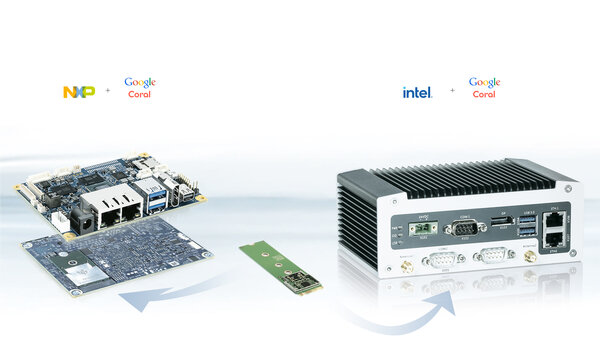
Increasing productivity and quality are key drivers for the use of artificial intelligence (AI) in production. In quality assurance, for example, AI can be used in the area of visual surface analysis to check a surface for edges, colour infiltrations and other defects in the paintwork in welding seams or cast. Without AI, employees usually have to recognize these deficiencies with the naked eye, which often leads to avoidable errors and fatigue.
Automated surface analysis: the algorithm learns what is important
In order to teach an algorithm what is good and what is bad, i.e. to evaluate the quality of an object surface, usually thousands of images are necessary, which also have to be classified. The algorithm learns by itself using neural networks. Later on, the speed of the image processing is particularly important, especially the quality has to be recorded and checked in real time. If an object is transported on an assembly line, algorithms usually have to evaluate at least ten images to detect any errors. This results in a necessary speed of more than 30 images (frames) per second! Camera systems generate around 400 frames per second, but conventional processes only process a fraction of that. Higher processing rates are only possible with the appropriate accelerator chips or cards.
Quality inspection in real time: With Google's Coral accelerator, companies benefit from pre-trained models
Kontron's AI platform AI-PITX-100-GC is based on an M.2 module with Google's Coral accelerator for the TensorFlow Lite software ecosystem and enables up to 100 frames per second. TensorFlow Lite is currently one of the most important open-source platforms for AI and there are good reasons for this: The platform's algorithms are based on huge amounts of data that are only available to large technology groups. Networks that have already been trained make it easy to train algorithms with your own data for an individual application.
All TensorFlow Lite applications can be implemented directly in the Kontron AI platform AI-pITX-100-GC and on this basis, applications with neural networks and deep learning can be developed - for example for object recognition or quality assurance of objects. With the help of well-documented examples, users can quickly and easily start the test phase. Results from completed projects show that first successes can be achieved quickly on the basis of existing algorithms.
Kontron's AI platform: low surcharge, high acceleration
Kontron`s Ki platform AI-pITX-100-GC is a cost-effective alternative to set up gateways. The platform offers several USB interfaces and powerful ports to connect cameras for visual inspection. The surcharge for an acceleration is comparatively low. Roughly, for a ten percent surcharge for the CPU board, the user gets a ten times higher performance. In many applications, a considerable leap in object detection can be achieved with a low investment.
The TPU supports small and low-power applications from 2 to 4 TOPS per watt. The low power consumption is particularly important at ambient temperatures of 50 ° C and more. This applies to the inspection of metal castings, for example, because devices there have to withstand the highest possible temperature range. In principle, USB cameras have a limited cable length, so the computer platform must be in close proximity. In the future, however, it will be possible to connect the cameras via Power over Ethernet (PoE) so that longer distances can be bridged without cables.


{{comment.comment}}